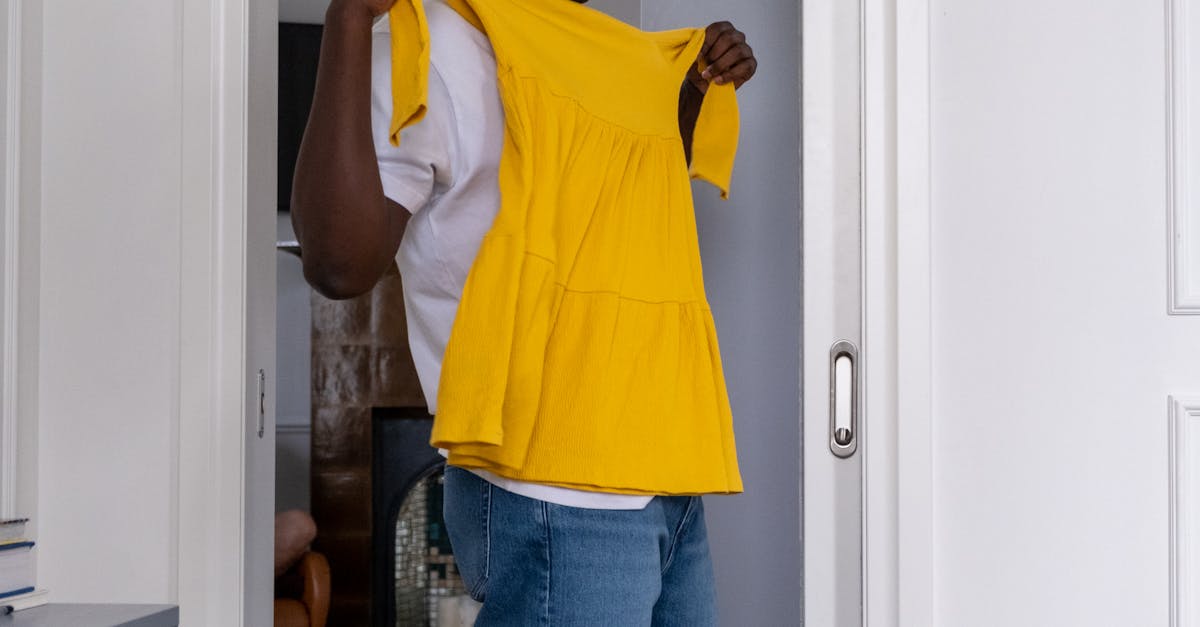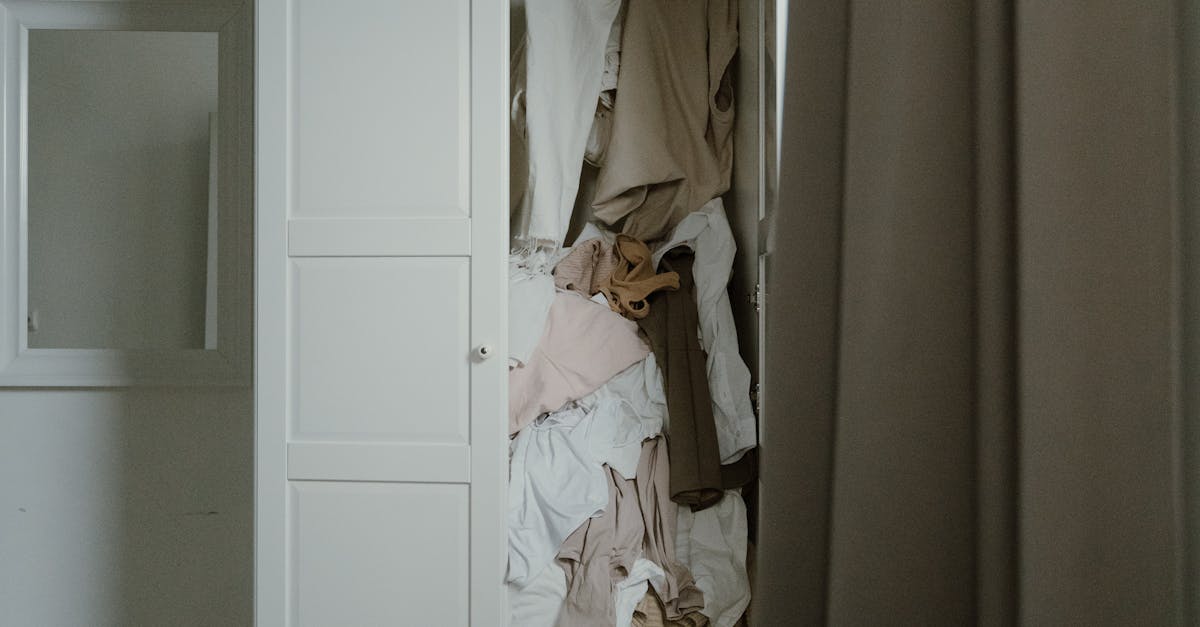
Table Of Contents
Assessing Depth Requirements
When measuring for sliding door wardrobes, assessing the depth requirements is crucial for ensuring that the wardrobe provides sufficient storage space without overwhelming the room. Typically, a depth of at least 600mm is recommended to accommodate clothes and other items effectively. This depth allows for hanging clothes on standard hangers while providing enough room for shelving or additional storage solutions.
It's important to consider the depth in relation to the overall layout of the room. If the wardrobe is too deep, it may obstruct pathways or limit access to other furniture. Conversely, a shallower design might compromise storage capacity. Evaluating how the wardrobe’s depth aligns with the room's aesthetics and functionality can help create a well-balanced space.
What Depth You Need for Storage
When selecting the depth for sliding door wardrobes, it’s essential to consider the type of items you plan to store. Standard depths typically range from 450mm to 600mm. Choosing a depth that accommodates hanging garments, folded clothes, and accessories can enhance storage efficiency. A depth of around 600mm is advisable for hanging clothes to ensure they remain wrinkle-free.
Additionally, the depth affects accessibility and usability. Shallow shelves may limit the ability to store larger items, while deeper shelves can make retrieval more cumbersome if items get pushed back. It's vital to strike a balance that allows for easy access to your belongings while optimising the space in your room. Tailoring the depth of sliding door wardrobes to your specific storage needs can lead to a more organised and functional living environment.
Considering Surrounding Furniture
When planning the installation of sliding door wardrobes, it’s essential to consider the surrounding furniture in the room. The spacing between the wardrobe and any nearby items can greatly impact both the functionality of the wardrobe and the overall aesthetic of the space. For instance, a bedside table or dresser placed too close might restrict the movement of the sliding doors, making it difficult to access clothing and other items stored inside. Ensuring enough clearance not only enhances accessibility but also provides a more visually appealing arrangement.
The arrangement of furniture can also dictate the design and size of the sliding door wardrobes. If you have larger pieces such as a bed or a sofa, they may limit where you can place the wardrobe. It is important to assess how these items align with the wardrobe's location to avoid a cramped or disorganised feel. Taking measurements of nearby furniture and maintaining a balance in the room can help create a seamless integration of the sliding door wardrobes into your living space.
How Nearby Items Affect Space
When measuring your space for sliding door wardrobes, consider the proximity of surrounding furniture. Nearby items can significantly influence how much room you have for the wardrobe and its effective use. For example, a bed, dresser, or chair placed too close may restrict access to the wardrobe or obstruct the sliding doors. Ensuring adequate distance can prevent inconvenience and allow for unimpeded movement when accessing your belongings.
It is also important to think about how the orientation of your room affects the placement of sliding door wardrobes. Items like bedside tables or bookshelves might not only encroach on the wardrobe’s opening but also create visual clutter. Evaluating the layout with an eye towards practicality will help maximise both storage and ease of use, providing a seamless integration of your wardrobe into the overall design of your space.
Accounting for Door Overhang
When selecting sliding door wardrobes, it's crucial to account for the overhang created by the sliding doors. These doors typically require some clearance space to operate smoothly. Measure the space where the doors will slide open, ensuring that adjacent walls or furniture won't obstruct their path. This extra space, often overlooked, can impact the functionality of the wardrobe.
Additionally, consider the types of handles or pulls that may protrude from the doors. Some models have more prominent hardware, which may require additional clearance to prevent potential damage to surrounding items. By accounting for these factors, you can ensure that your sliding door wardrobes will operate effectively while maintaining harmony with the existing layout of your room.
Understanding Clearance Needs
When planning for sliding door wardrobes, clearance is a crucial aspect to consider. The type of door mechanism used can influence the space required for doors to operate smoothly. A standard sliding door typically necessitates at least 10 centimetres of space above the top of the wardrobe to accommodate the track and allow for proper movement. If the ceiling is particularly low, this requirement can pose challenges in the design and function of your wardrobe.
Additionally, any furniture or fixtures adjacent to the wardrobe must be factored into your measurements. Ensuring there’s adequate clearance ensures easy access, preventing situations where nearby items obstruct the door's movement. Properly assessing the surrounding area allows for a better flow, making it easier to retrieve clothing and other items stored within sliding door wardrobes. Attention to these details will help in creating a functional and aesthetically pleasing space.
FAQS
What tools do I need to measure my space for a sliding door wardrobe?
You will need a tape measure, a pencil or marker, and possibly a notepad to jot down your measurements. A level can also be helpful for ensuring your wardrobe will be installed correctly.
How do I determine the depth required for my sliding door wardrobe?
The depth required for your wardrobe typically ranges from 600mm to 750mm, depending on what you plan to store. Assess your storage needs and the items you want to keep inside to make an informed decision.
Why is it important to consider surrounding furniture when measuring for a sliding door wardrobe?
Nearby furniture can restrict the movement of sliding doors and impact accessibility. It's crucial to measure the distance from your wardrobe to surrounding items to ensure smooth operation and ease of use.
What is door overhang and why do I need to account for it?
Door overhang refers to the space required for the sliding doors to open without obstruction. Ensuring adequate clearance for the doors to slide fully open is essential for functionality, so factor this into your measurements.
Can I install a sliding door wardrobe in a small room?
Yes, sliding door wardrobes are ideal for small spaces as they do not require additional room for door swing. Just make sure to carefully measure the available space and account for both depth and clearance to ensure a proper fit.
